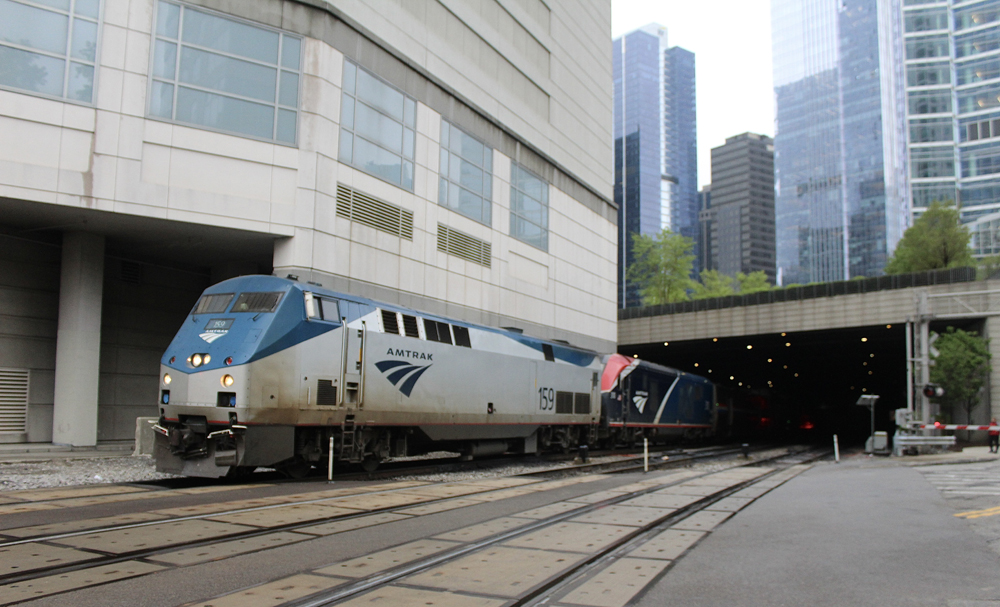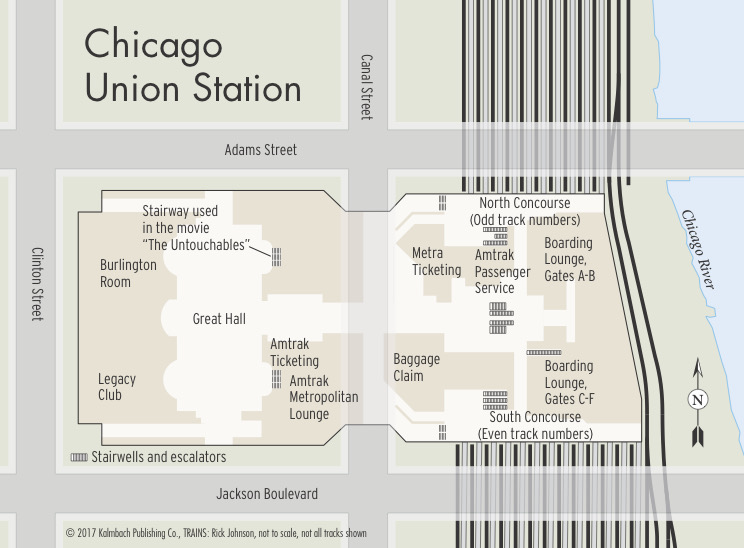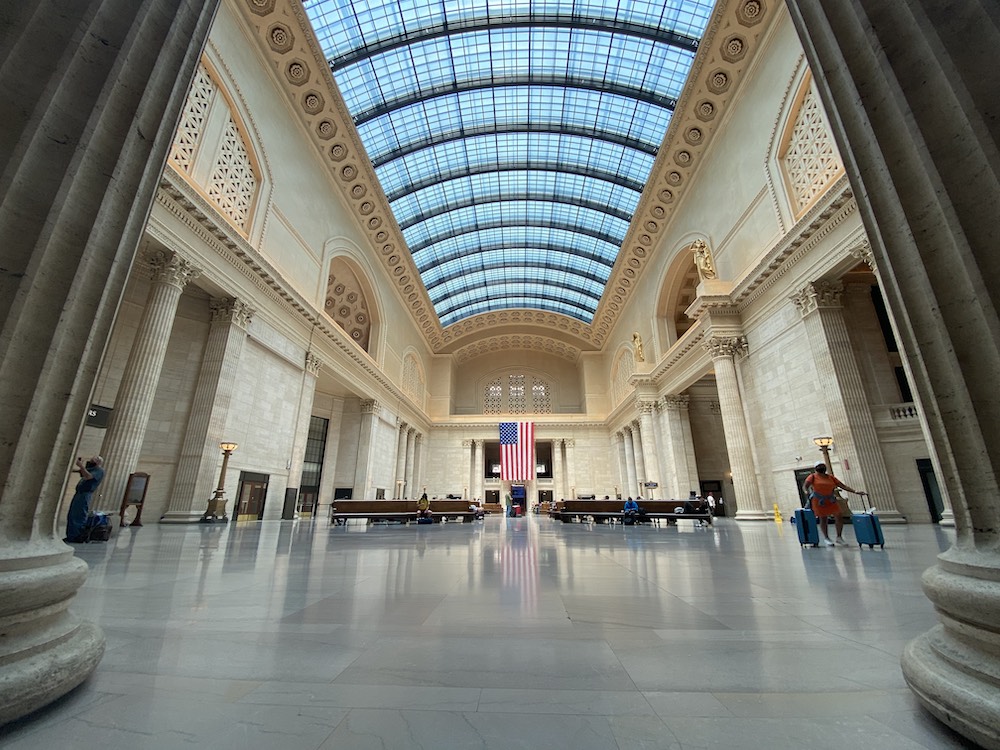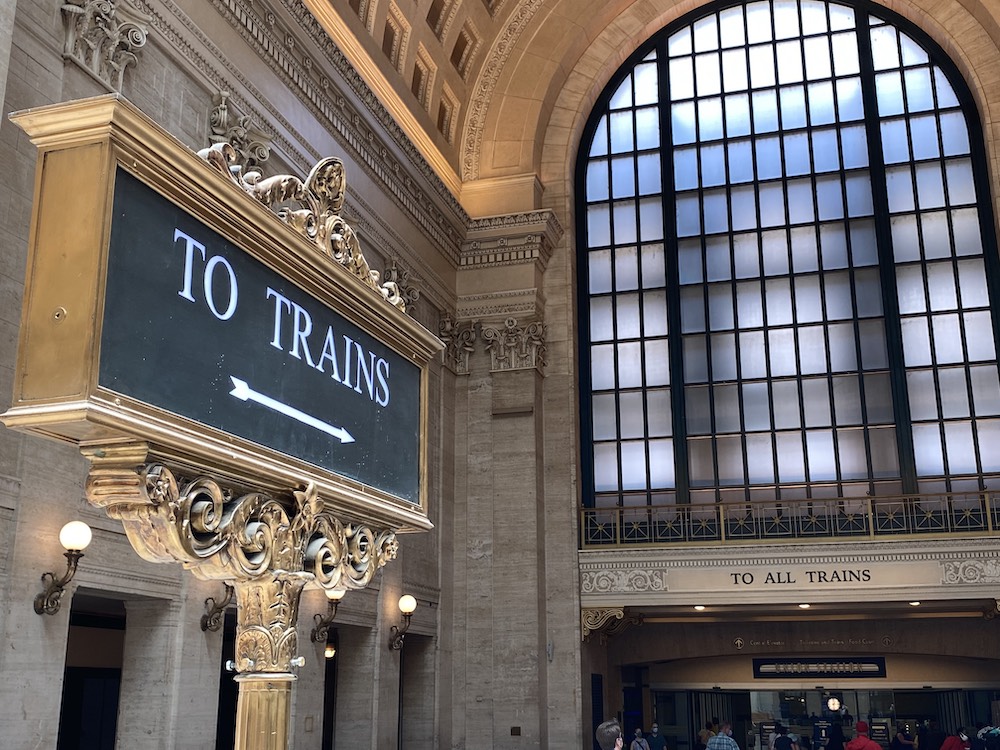
Planning a future train trip with a visit to Chicago’s Union Station as part of the itinerary? The massive terminus is the Windy City’s only intercity passenger station in service today. Hosting all of Amtrak’s Midwest regionals and most of the long-distance trains, plus serving as one of the four hubs for the city’s Metra commuter rail system, it’s one of the busiest railroad stations in the United States.
Understanding which trains arrive and depart Chicago Union Station can help ensure a less intimidating experience. The station is home to two “back-to-back” concourse areas – separated by the underground Amtrak/Metra ticket offices, baggage claim, boarding lounge and escalators/elevators that’ll take you up to the food court as well as Jackson Boulevard, Adams and Canal streets.

North Concourse
Odd Track Numbers: The north concourse at Adams Street was once the passenger terminus for the Milwaukee Road out of Chicago, including most of the swift Hiawatha streamliners. Today, tracks 17 to 23 on the east side of the concourse are normally occupied by Amtrak’s Chicago–Milwaukee Hiawatha Service and Chicago-Seattle Empire Builder, with nearby gates A and B of the boarding lounge reserved for passengers of the two trains. Most of the remaining platforms to the west are used by Metra to serve suburbs northwest of the city.
Amtrak:
- Empire Builder: Chicago – St. Paul/Minneapolis – Spokane, Wash. – Portland, Ore./Seattle
- Hiawatha Service: Chicago – Milwaukee
Metra:
- Milwaukee District North (MD-N): Chicago – Lake Forest – Fox Lake
- Milwaukee District West (MD-W): Chicago – Elgin – Big Timber
- North Central Service (NCS): Chicago – Antioch [no weekend service]
South Concourse
Even Track Numbers: Approximately 70 years ago, the south concourse on Jackson Boulevard was a major passenger terminal for the legendary Burlington Route, Pennsylvania Railroad and Gulf, Mobile and Ohio Railroad, with streamliners of the Broadway Limited and California Zephyr fame. Much has changed since then, but the busy allure of travelers boarding and disembarking has not. Amtrak usually handles the east half of the concourse closest to gates C through F of the boarding lounge, while Metra’s three services heading southwest of the city use the remaining platforms on the west side.
Amtrak:
- Blue Water: Chicago – East Lansing – Port Huron, Mich.
- California Zephyr: Chicago – Omaha, Neb. – Denver – Salt Lake City – Emeryville (San Francisco), Calif.
- Capitol Limited: Chicago – Cleveland – Pittsburgh – Washington, DC
- Cardinal: Chicago – Indianapolis – Cincinnati – Washington, DC – Baltimore – Philadelphia – New York
- Carl Sandburg and Illinois Zephyr: Chicago – Quincy, Ill.
- City of New Orleans: Chicago – Memphis, Tenn. – New Orleans
- Illini and Saluki: Chicago – Champaign – Carbondale, Ill.
- Lake Shore Limited: Chicago – Cleveland – Albany, N.Y. – Boston – New York
- Lincoln Service and Missouri River Runner: Chicago – St. Louis – Kansas City, Mo.
- Pere Marquette: Chicago – Grand Rapids, Mich.
- Southwest Chief: Chicago – Kansas City – Albuquerque, N.M. – Los Angeles
- Texas Eagle: Chicago – St. Louis – Dallas – San Antonio – Los Angeles
- Wolverine: Chicago – Ann Arbor – Detroit – Pontiac, Mich.
Metra:
- BNSF (BNSF): Chicago – Aurora
- Heritage Corridor (HC): Chicago – Joliet [no weekend service]
- SouthWest Service (SWS): Chicago – Manhattan [no weekend service]
Great Hall

If you have extra time when passing through Chicago Union Station, be sure to visit the Great Hall. Just west of Canal St. between Jackson Blvd. and Adams St., the main waiting room has the grandeur of a cathedral with its towering columns, statues and skyline that serves as a centerpiece from above. Have an Amtrak ticket in either business class or sleeper? Don’t forget to take advantage of Amtrak’s two-story Metropolitan Lounge on the southeast corner of the Great Hall. When it’s time to board, simply locate the historic “To Trains” sign and arrow that’ll point you to the concourses.

Get a historical overview of how and why the city of Chicago became the nation’s rail hub in Trains’ updated special edition of Chicago: America’s Railroad Capital.









